Effectively nurturing prospects from initial outreach to closed deals is a key challenge for B2B companies. With countless competitors vying for attention, your sales sequence can be the difference between a stagnant pipeline and consistent revenue growth.
Imagine an automated, multi-channel sequence delivering personalized messaging at perfect moments, driving engagement throughout the buyer’s journey. Such strategic, scalable outreach is a necessity for predictable lead generation.
Using an optimized sales sequence that includes email, LinkedIn, and other channels, you can quickly move relationships from the first contact to closed/won.
In this post, you’ll learn how to build a killer B2B sales sequence primed for automation. We’ll cover identifying your target audience, crafting compelling messaging, constructing a multi-touch cadence, and optimizing through testing.
Sales sequence now vs then
The sales sequence has come a long way since it was first invented.
B2B sales sequences used to be almost exclusively based on in-person meetings and phone calls. Sales representatives wasted hours upon hours of manual lead tracking to follow up with prospects on their lists, which made the entire sequence long and arduous.
But with the introduction of sales automation tools and customer relationship management systems, or CRM, this all changed.
Initially, the sales sequence was straightforward and relatively inflexible, with cold calls and direct mail being the primary methods. The boom of the internet and the subsequent digital transformation made sales sequences more fluid and driven by data.
Email sequences, social media posts, and sales analytics now help prospects navigate through the funnel and into a buying position. These technological developments have made sales outreach much more efficient and have enabled representatives to build relationships with prospects through highly targeted, personalized messages and follow-up emails.
Sales sequence in B2B vs sales sequence in B2C
In both B2B and B2C contexts, you need an effective sales sequence for guiding prospects through the sales funnel. However, the approaches differ significantly due to the nature of the target audience and the complexity of the sales process.
Here’s how:
Target audience and sales cycle
In B2B sales, the target audience is typically a prospect company with multiple decision-makers, which requires a more complex and prolonged sales cycle.
The emphasis is on building trust and providing valuable information that addresses the business needs of the company.
B2B sales sequences frequently encompass various communication channels, such as social media messages, email templates, personalized emails, and phone calls, in order to guarantee that each interaction effectively connects with different stakeholders.
In contrast, B2C sales sequences target individual consumers, with the sales process being shorter and more straightforward.
The focus is on creating a strong first impression and leveraging emotional triggers to drive conversions. Sales reps in B2C often rely on engaging prospects through social media interactions and personalized marketing messages that highlight unique benefits and social proof.
Sales automation and personalization
B2B and B2C sales teams use sales automation tools to conserve time and increase productivity.
However, the degree of personalization differs. B2B sales sequences need extremely customized messages that align with the special pain points and business objectives of every prospect company.
Sales representatives, with the help of specific buyer persona details, write follow-up emails and create educational material that leads prospects in the appropriate direction.
B2C, on the other hand, is much less complicated. Though personalization plays an important function, messages are designed to be broad and appeal to lots of people at once. Automation tools assist in segmenting the target audience and providing the appropriate message to the ideal person at the ideal time; however, the level of customization isn’t as high as in B2B.
Follow-up and relationship-building
Follow-up is an important part of both B2B and B2C sales cycles.
In B2B, follow-up messages are strategically planned to nurture relationships and provide insights that move prospects toward a final stage where they are sales-ready. To do this, sales reps need to communicate clearly, answer objections, and show the value proposition through product demos and useful information.
In B2C, follow-ups are more immediate and aimed at overcoming objections quickly to close deals. The communication channel might include text messages and social media interactions that prompt potential customers to take swift action.
Sales analytics and campaign tracking
In both B2B and B2C, sales analytics are a key part of figuring out the current sales sequence’s success.
B2B sales campaigns rely on detailed analytics to track response rates, conversion rates, and the effectiveness of various channels. With this information, salespeople can fine-tune their cadence and zero in on the most promising leads.
In B2C, analytics are used to monitor consumer behavior and optimize sales campaigns for better engagement and higher conversions. The focus is on tracking the impact of marketing efforts and adjusting strategies to maximize the return on investment.
Having established the distinction, we can move on to discussing the steps to creating an optimal B2B sales sequence.
How to build effective sales sequences in B2B
Establishing and setting up the right sales sequence for you requires several key steps.
Step #1: Identify the target audience

Start by creating a detailed profile of your ideal customer. Consider key components such as industry, company size, geographic location, and specific pain points your product or service can address. Use prospecting tools like Hunter to gather data on potential customers so that your efforts are directed at those who are most likely to convert.
A deep understanding of your target audience allows your sales rep to craft messages that resonate on a personal level. Knowing your audience’s preferred channels—whether they are more responsive to email sequences, social media interactions, or direct phone calls—enables more effective outreach.
Analyzing past sales data can also provide insights into who your most valuable customers are.
Check your CRM to identify patterns and characteristics that are common among your best clients. Such a data-driven approach helps refine your target audience and improves the accuracy of your initial outreach.
Regularly update and refine your target audience profile as market conditions and business needs evolve. Your sales sequences will remain relevant and effective, which will help attract new prospects and convert them into loyal customers.
When you correctly identify and understand your target audience, you set yourself up for an effective and smooth sales process.
Step #2: Segment your leads

You can make your sales sequence more effective by segmenting your prospects so that each segment gets personalized messages that address their specific needs and pain points.
Start by grouping your leads based on common characteristics, such as:
- Industry,
- Company size,
- Geographic location,
- Business needs,
- Pain points/interests,
- Job role/title,
- Engagement level.
Use sales analytics to identify trends and behaviors within these segments.
For instance, prospects regularly interacting with your content on social media may require a different approach than those responding to email sequences.
Within each segment, tailor your initial outreach to reflect the unique value proposition that will resonate most with them. Craft subject lines that grab attention and reflect the specific interests of each group.
Through segmentation, sales reps can also send follow-up emails that are more relevant and on time.
You can send follow-ups that move prospects through the sales funnel more effectively if you know where each prospect is in the funnel. Track your emails to see how many people are responding, and change your strategy as needed.
As leads get closer to the final stage, they may need more detailed information, like a product demo, to get past objections and make a choice. For those who are just starting out, you could help them with educational content that addresses their problems and shows off your expertise.
Review and update your segments regularly to reflect any changes in your prospects’ needs or market conditions. Your sales campaign will always be aligned with the expectations of potential customers if you maintain a long-term relationship with them.
Step #3: Define your goals

Clear, actionable goals will guide your sales reps throughout the sales process and help measure the success of your sales campaign.
Start by identifying the primary objectives of your sales sequence. Are you aiming to generate more leads, close more deals, or nurture long-term relationships with existing customers? Clearly outlining these goals helps align your team’s efforts and keeps everyone on the same page.
Next, break down these overarching goals into specific, measurable milestones.
For example, if your main goal is to generate more leads, a specific objective might be to increase the number of qualified prospects by 20% within the next quarter. Similarly, if your focus is on closing deals, you might aim to improve conversion rates at each stage of the sales pipeline.
Once again, you can use sales analytics to set realistic and achievable goals. Analyzing past performance data can provide insights into what is feasible and where improvements can be made. Your goals will be firmly rooted in reality and supported by evidence, thanks to this data-driven approach.
Every aspect of your sales sequence has to support your overall business strategy, which can be achieved through correct goal setting.
For instance, if your value proposition emphasizes cost savings, your goals might include reducing the sales cycle duration or increasing the number of prospects who receive a product demo.
Communicate these goals clearly to your sales reps and provide them with the tools and resources they need to succeed. Regularly track progress using email tracking, sales funnel metrics, and other key performance indicators (KPIs). Ongoing monitoring will allow you to make adjustments as needed and stay on course to achieve your objectives.
Step #4: Create a value proposition
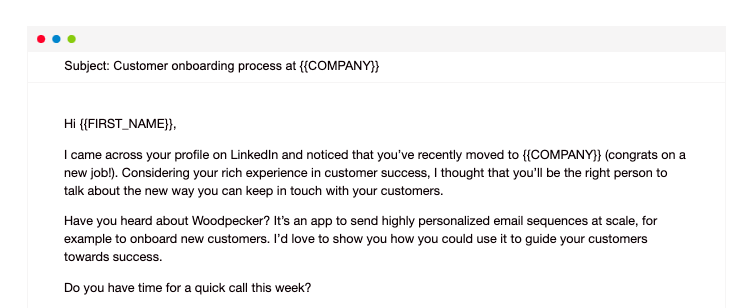
Your value proposition answers the essential question: why should prospects choose you over your competitors?
Start by understanding the specific business needs and pain points of your prospects.
Gather insights into what challenges they face and what solutions they are looking for. With this knowledge, you can make sure that your value proposition really hits home with the people you want to reach.
Your value proposition should be short and to the point. It should show what makes your product or service special and useful.
To get your prospects’ attention right away, it should be a big part of the first contact, like in the subject line of your email sequence. A strong subject line piques interest and encourages recipients to open and read your email.
Incorporate your value proposition throughout the sales sequence, from the initial outreach to the final email.
Each follow-up email and message should restate this offer and give prospects steps they can take and insights that will help them move through the sales pipeline.
Personalized messages that address specific pain points and demonstrate how your product can solve their problems are particularly effective. In fact, personalization boosts open rates by 26% and sales by 20%.
Use various channels, including social media interactions, to consistently convey your value proposition. With them, your messaging reaches prospects regularly and through their preferred communication platforms.
As prospects move through the sales process, continue to provide insights that align with your value proposition. This could include case studies, product demos, or tailored solutions that showcase the powerful tools your product offers. The goal is to help prospects understand the tangible benefits they will gain and how your product meets their business needs.
Step #5: Develop a sequence structure
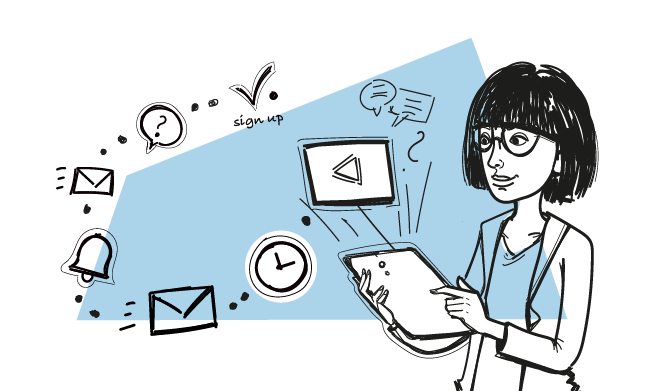
Creating a well-organized sequence structure supports each step of your sales process and guides prospects from the first contact to the final decision.
Start by mapping out the stages of your sales pipeline. In B2B, these usually include the following:
- Lead generation/prospecting,
- Initial qualification,
- Needs discovery/analysis,
- Product/service presentation,
- Proposal/quote,
- Negotiation,
- Closed won,
- Closed lost.
Identify the key touchpoints where your sales reps will engage with prospects.
Some important touchpoints are:
- Cold outreach
- Cold emails
- Cold calls
- LinkedIn outreach
- Lead nurturing
- Email nurture sequences
- Content offers (whitepapers, guides, etc.)
- Webinars/events
- Sales calls
- Discovery calls
- Product demos
- Proposal presentations
- Email follow-ups
- After discovery call
- After product demo
- Proposal follow-up
- Closed won
- Onboarding
- Implementation
- Training
- Upsell/cross-sell
- New product/service offers
- Expansion opportunities
- Limited features
Every stage should be an incremental progression that brings prospects closer to the point of conversion.
Next, define the purpose and content of each touchpoint.
Your initial outreach should introduce your value proposition and pique interest. Follow-up emails can provide deeper insights, address potential objections, and offer actionable steps.
For example, after an introductory email, a follow-up message might include a case study or a product demo invitation that highlights how your solution meets their business needs.
Incorporate various communication channels to keep prospects engaged.
While email sequences are fundamental, integrating social media interactions and occasional phone calls can create a more dynamic and responsive sales process. It is more likely that a prospect will respond positively if your message gets to them through the channels they prefer.
Step #6: Craft personalized emails
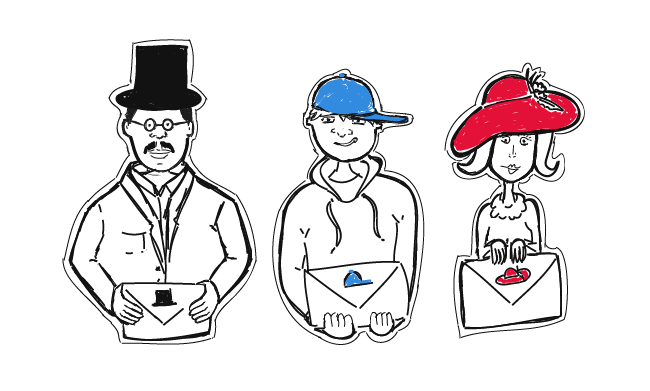
Prospects are more likely to respond to personalized messages that show you understand their specific problems and can offer custom solutions.
Start by putting the prospect’s name and company in the email’s subject line and first sentence. Adding this small touch can make the email feel more relevant and targeted, which can help with open rates.
Research the prospect’s company and industry to gather insights that can be woven into your message. Mention specific pain points they might be facing and how your product or service can address these issues.
Segmentation helps. It allows you to craft messages that speak directly to the needs and interests of different segments, whether they are in the early stages of the sales funnel or closer to making a decision.
Include content that is valuable and relevant to the recipient.
This could be industry insights, case studies, or product demos that demonstrate how your solution has helped similar companies. Each email has to provide actionable steps and guide prospects on what to do next, whether it’s scheduling a call, downloading a whitepaper, or attending a webinar.
Keep track of how prospects interact with your emails using email tracking tools. Monitor open rates, click-through rates, and responses to refine your approach.
Follow up based on their actions; for example, if a prospect clicks on a product demo link, send a follow-up email offering to set up a personalized demo session.
Step #7: Set up multi-channel touchpoints

If you want to create a complete B2B sales sequence, you need to set up multi-channel touchpoints. Engaging with prospects through a variety of channels increases the likelihood that you will be able to connect with them in the way they prefer.
It also keeps your message consistent and at the top of their minds.
Begin by identifying the most effective channels for reaching your target audience. Map your customer journey, check competitor channels, and evaluate their reach and potential.
You can use email, social media, phone calls, and even SMS in your messaging.
Since different prospects have different preferences, using a variety of channels will help you reach more people.
For your email sequence, send personalized emails that address specific pain points and offer actionable steps.
Follow up with prospects regularly to keep the conversation going and to address any questions they might have. Constantly monitor engagement and adjust your strategy as needed.
Integrate social media interactions into your sales sequence.
Platforms like LinkedIn are particularly valuable for B2B sales. Share relevant content, engage with posts from your prospects, and initiate conversations using direct messages or InMail.
Doing so keeps your brand in the public eye and aids in relationship building.
Phone calls remain a powerful tool for direct communication.
Schedule calls to discuss prospects’ needs in detail, offer product demos and answer any objections they may have.
Personal phone calls add a human touch to your sales process and can be particularly effective at key stages in the sales pipeline.
Don’t overlook SMS as a touchpoint. For prospects who prefer text communication, a well-timed SMS can be a great way to remind them of a meeting, follow up on an email, or provide quick updates.
Coordinate these touchpoints to create a seamless and cohesive sales campaign. Keep your messaging consistent across all platforms, and make sure each interaction builds upon the one before.
Consistent engagement between your sales representatives and prospects across channels increases the probability of advancing them through the sales funnel.
Step #8: Determine timing and cadence
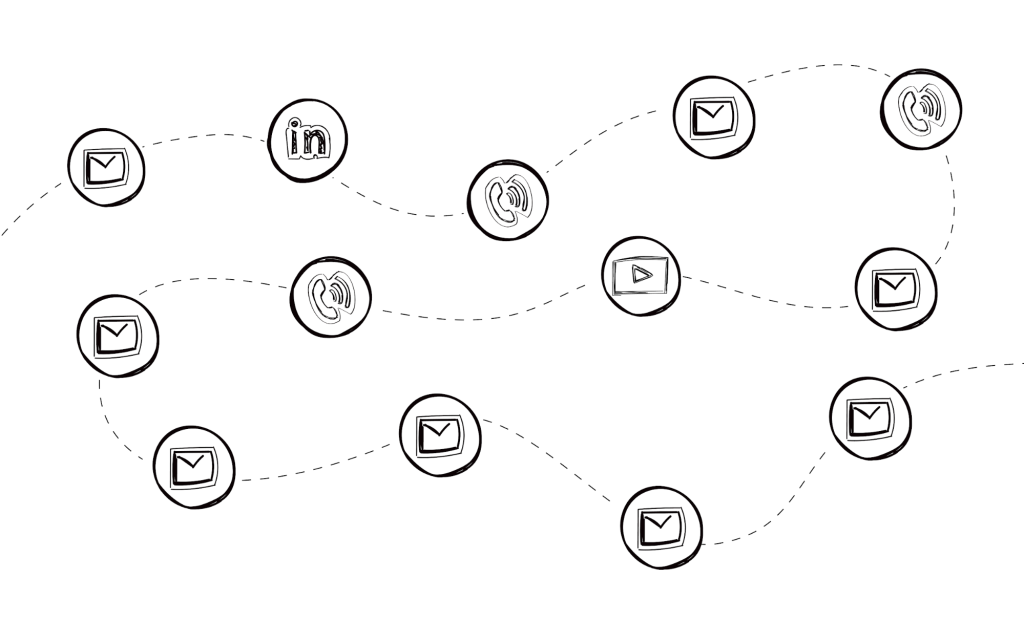
The goal of a proper cadence is to find a balance that keeps your company top-of-mind without overwhelming or annoying your prospects.
Start by establishing an initial outreach schedule.
The first touchpoint should be prompt, ideally within 24 hours of identifying a new lead. Getting on top of things quickly shows responsiveness and enthusiasm. Follow up with a series of strategically timed emails and messages.
For instance, after the initial outreach, you might send a follow-up email three days later to provide additional information or answer potential questions.
Here’s what your cadence might look like:
Day 1
- Initial outreach via email or LinkedIn message
- Introduce yourself and your company
- Briefly explain how your product/service can benefit them
- Ask for a brief call to discuss further
Day 4
- Follow-up email
- Refer back to your initial outreach
- Provide additional context on your value proposition
- Suggest a few time slots for a call
Day 7
- Follow-up phone call (if there is no response)
- Attempt to reach out via phone
- Leave a voicemail reiterating your interest
Day 10
- Follow-up email or LinkedIn message
- Acknowledge that you haven’t connected yet
- Offer to provide more information or resources
- Suggest a specific date/time for a call
Day 14
- Final follow-up email
- Express that this is your last attempt to connect
- Summarize the key benefits you can provide
- Invite them to reach out if their situation changes
Day 21
- Mark is unresponsive (for now)
- Add them to a long-term nurturing campaign
- Check back in a few months
Space out your communications to maintain regular contact without becoming intrusive.
A common cadence might include an initial outreach, followed by a second email three days later, and subsequent touchpoints every week or two. Adjust the frequency based on the prospect’s engagement and feedback.
Identify the optimal times for sending emails and making calls through existing data. Analyze past interactions to determine when your prospects are most likely to respond. For example, you might find that Tuesday mornings have higher open rates for emails, while Thursday afternoons are better for phone calls.
Incorporate varied touchpoints into your cadence, including social media interactions and phone calls, to keep the engagement dynamic. Thanks to this multi-channel strategy, your prospects will hear your message on a regular basis without feeling overloaded by any one channel.
Track key performance metrics to monitor the effectiveness of your timing and cadence. Use this data to refine your approach. If you notice that prospects are not engaging as expected, consider adjusting the frequency or timing of your messages.
Personalize the timing based on the individual prospect’s behavior and preferences. For instance, if a prospect engages with your emails more frequently in the evening, adjust your send times to align with this pattern.
Step #9: Automate the sequence
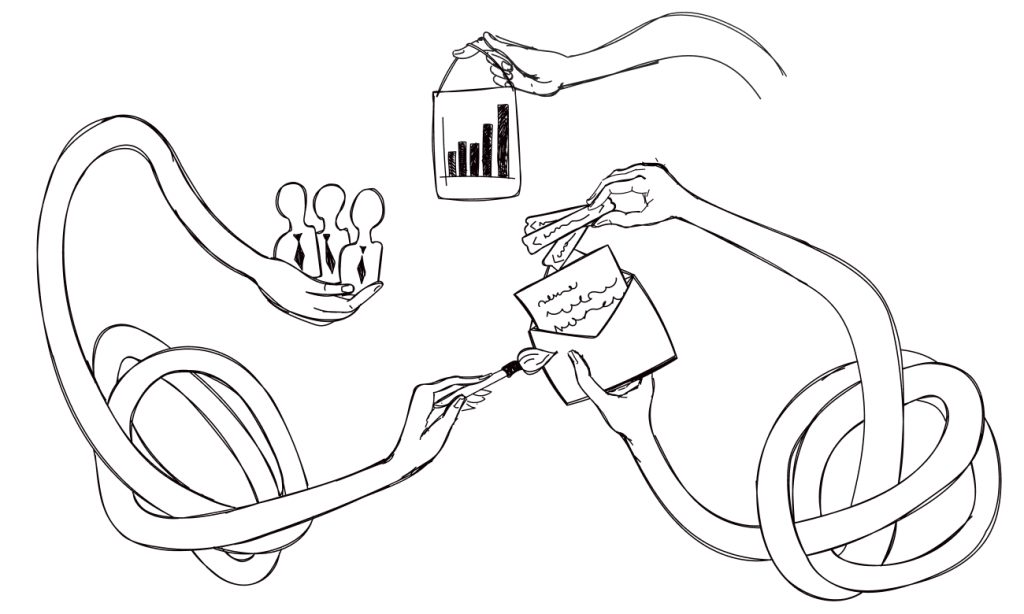
Automating your B2B sales sequence can make it much more consistent and efficient. Your sales reps will have more time to do high-value tasks like closing deals and building relationships. With automation, your messages will be sent at the right time and through the right channels, without you having to do anything by hand.
Many B2B CRM systems and dedicated sales automation tools offer powerful features to help you manage your sales sequence.
Look for a platform that integrates well with your existing systems and provides capabilities such as email automation, task scheduling, and lead tracking.
Here’s how it works in Woodpecker:
Set up a new campaign
- Log into your Woodpecker account and click “Add Campaign” to create a new cold email campaign.
- Name your campaign and select the email address you want to send it from.
Build your sequence
- Click “Add Step” to start building your sequence. You can choose to send emails, visit LinkedIn profiles, or send LinkedIn connection requests/messages at each step.
- For email steps, craft your message and use personalization tags like {$firstName} to customize each email. You can also set delays between steps to control cadence.
- For LinkedIn steps, write your connection request message using the 300-character limit. You can also set Woodpecker to visit prospect profiles before/after sending the request.
- Continue adding steps to build out your full multi-channel sequence, alternating between emails and LinkedIn touchpoints for maximum impact.
Set scheduling and sending options
- Under the “Schedule” tab, set the days and times you want Woodpecker to automatically send your sequence steps.
- Use the “Sending” options to control send volumes, warm-up periods for new email addresses, and other deliverability settings.
Launch and monitor
- Once your sequence is built, upload or copy/paste your prospect list into Woodpecker.
- Click the “Start Campaign” button to begin automatically executing your sequence.
- Use Woodpecker’s reporting dashboards to monitor open rates, replies, and other engagement metrics.
Curious about Woodpecker? Start a free 7-day trial now!
Design your email sequence with automation in mind. Create a series of emails that cater to different stages of the sales pipeline, from initial outreach to follow-up emails and final messages.
Use email templates to maintain consistency in your messaging and personalize these templates with dynamic fields like the prospect’s name, company, and specific pain points.
Regularly review and update your automated sequence to keep it aligned with your evolving business needs and market conditions. As you gather more data and insights, refine your templates, triggers, and timing to optimize the performance of your sales sequence.
Step #10: A/B test your messages
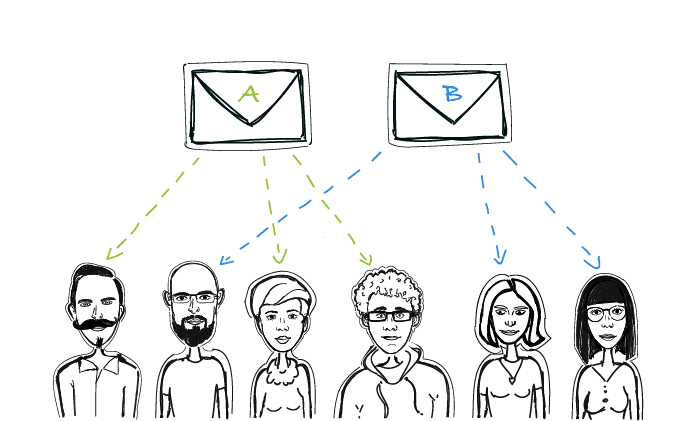
Your messaging cannot stay static. You will need to test and refine it as your campaigns progress. Luckily, A/B testing exists, and you can easily adjust your messages based on what works.
Start by identifying the specific element you want to test. You can try almost anything:
- Email subject lines
- Email body copy
- Sender name
- Sender details (job title, etc.)
- Send times
- Channels (email, LinkedIn, etc.)
- Offers/Calls-to-action
- Target audience segments
- Follow-up cadence
- Number of touchpoints
- Spacing between touches
- Channel mix
- Visuals (images, GIFs, videos)
- Personalization levels
- Tone (formal, casual, etc.)
- Value propositions
- Formatting/design
For example, you might test two different subject lines to see which one generates higher open rates. You need to change only one element at a time to accurately measure its impact.
Segment your target audience into two groups and send each group a different version of the message. Use Woodpecker to manage this process and track the results. For instance, Group A might receive an email with the subject line A, while Group B might receive the same email with the subject line B.
Would you like to learn more about A/B testing your outreach? Read our Guide to Carrying Out an A/B Test!
After collecting enough data, compare the results to determine the winning version. The version that performs better can then be adopted as the standard for that particular element of your sales sequence. For example, if Subject Line A leads to significantly higher open rates, you can use it in future email campaigns.
Use A/B testing as an ongoing strategy to continuously improve your sales sequence. Test new variations regularly to stay ahead of changing preferences and behaviors among your prospects. As a result of this iterative approach, your messaging remains relevant and effective over time.
Automate your way to more conversions
An automated, multi-channel sales cadence is key to consistent lead generation. When you combine emails, LinkedIn outreach, and other touchpoints into an optimized sequence, you can quickly nurture prospects from initial contact to closed deals.
However, simply setting and forgetting your cadence leads to diminishing returns. The most successful teams continuously optimize through A/B testing of messaging, visuals, channels, and cadence. Let data guide your enhancements.
While getting started requires upfront work, tools like Woodpecker simplify building and launching automated sequences. The payoff is more conversations, opportunities, and revenue.
Today, a haphazard outbound approach won’t cut it. Implement an automated, iterative sales cadence for predictable, scalable lead generation. Define your sequence, but keep optimizing relentlessly.
Try Woodpecker today. Start your 7-day free trial now!

